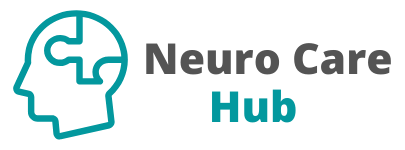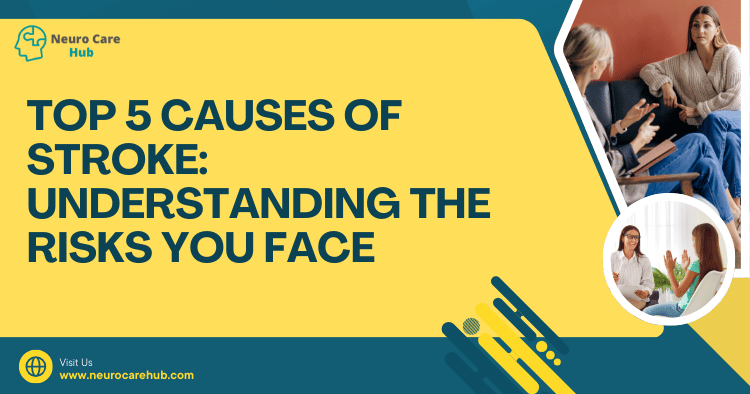Introduction
Stroke is a leading cause of disability and death worldwide. According to the World Health Organization (WHO), approximately 15 million people experience a stroke each year, with 5 million resulting in death and another 5 million suffering from permanent disabilities. Understanding the causes of stroke is vital for risk reduction. In this blog post, we will explore the top five causes of stroke and help you understand the risks you may face.
1. High Blood Pressure
High blood pressure, or hypertension, is one of the most significant risk factors for stroke. It can damage blood vessels and lead to conditions that increase the likelihood of a stroke.
Key Points:
- Statistics: Nearly 1 in 3 adults in the U.S. has high blood pressure, according to the Centers for Disease Control and Prevention (CDC).
- Mechanism: High blood pressure can cause blood vessels in the brain to burst or become blocked.
- Management: Regular monitoring, a healthy diet, exercise, and medications can help control blood pressure.
Tips to Manage Blood Pressure:
- Eat a heart-healthy diet, rich in fruits, vegetables, whole grains, and low-fat dairy.
- Reduce sodium intake.
- Engage in regular physical activity, aiming for at least 150 minutes per week.
Additional Resources:
2. Heart Disease
Heart disease encompasses a range of conditions that affect the heart’s structure and function, significantly increasing stroke risk.
Key Points:
- Connection to Stroke: Conditions like atrial fibrillation, heart valve disease, and previous heart attacks can lead to the formation of blood clots that may travel to the brain.
- Statistics: According to the American Heart Association, about 1 in 4 deaths in the U.S. is due to heart disease.
Preventive Measures:
- Maintain a healthy weight.
- Avoid excessive alcohol consumption.
- Get regular check-ups to monitor heart health.
Additional Resources:
3. Diabetes
Diabetes significantly increases the risk of stroke due to its effects on blood vessels and blood sugar levels.
Key Points:
- Statistics: People with diabetes are 1.5 times more likely to have a stroke than those without.
- Impact on Health: High blood sugar can damage blood vessels, increasing stroke risk.
Management Strategies:
- Monitor blood sugar levels regularly.
- Follow a balanced diet and exercise plan.
- Take prescribed medications to control diabetes.
Additional Resources:
4. Smoking
Smoking is a major risk factor for stroke, harming nearly every organ in the body, particularly the cardiovascular system.
Key Points:
- Statistics: Smokers are twice as likely to have a stroke as non-smokers.
- Mechanism: Smoking can thicken blood and increase plaque buildup in arteries.
Tips to Quit Smoking:
- Seek support through counseling or quitlines.
- Consider nicotine replacement therapies.
- Set a quit date and stick to it.
Additional Resources:
5. Obesity and Sedentary Lifestyle
Obesity and lack of physical activity are significant contributors to stroke risk, often leading to other risk factors such as high blood pressure and diabetes.
Key Points:
- Statistics: Obesity affects over 42% of adults in the U.S., according to the National Institutes of Health (NIH).
- Impact on Health: Extra weight can lead to increased blood pressure and cholesterol levels, heightening stroke risk.
Steps to Combat Obesity:
- Incorporate physical activity into your daily routine.
- Make gradual dietary changes to include more nutritious foods.
- Set realistic weight loss goals.
Additional Resources:
Conclusion
Understanding the causes of stroke is essential for prevention. By identifying personal risk factors and making lifestyle changes, you can significantly reduce your risk of experiencing a stroke. Regular check-ups with healthcare professionals can help manage these risks effectively.
FAQs
- Can strokes be prevented?
Yes, many strokes can be prevented by managing risk factors like high blood pressure, diabetes, and lifestyle choices. - What are the warning signs of a stroke?
Common warning signs include sudden numbness or weakness in the face, arm, or leg, confusion, trouble speaking, and severe headache. - How often should I check my blood pressure?
If you have hypertension or other risk factors, monitor your blood pressure regularly, at least once a month, or as recommended by your doctor.
By understanding these risks and taking proactive steps, you can help safeguard your health and reduce your likelihood of having a stroke. If you have any concerns about your health, consult with a healthcare professional for personalized advice.
Feel free to share this article with friends and family to raise awareness about stroke prevention!






